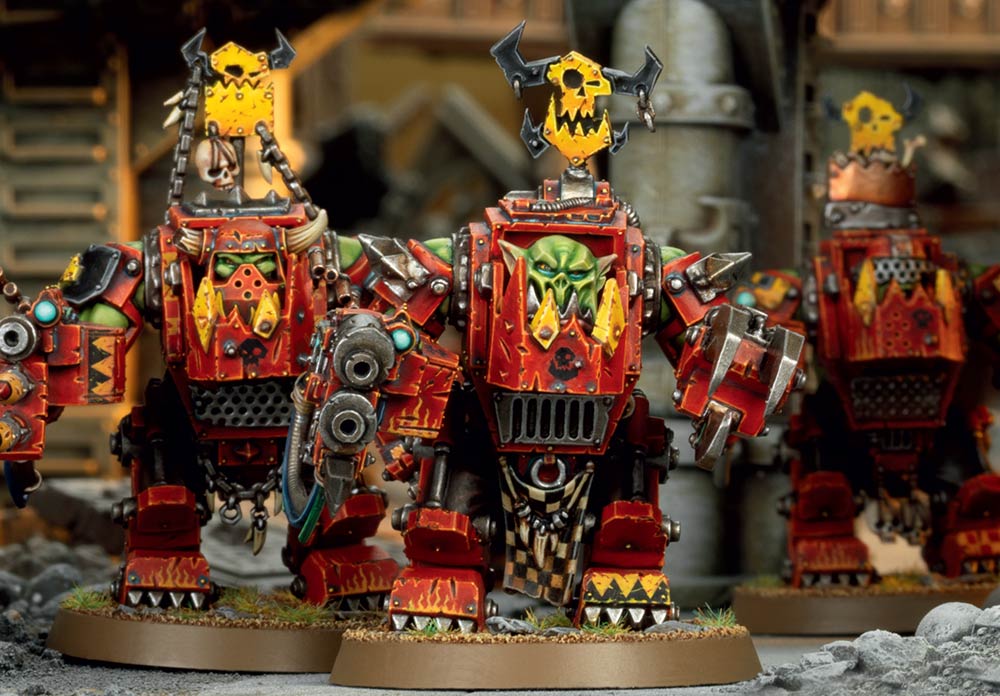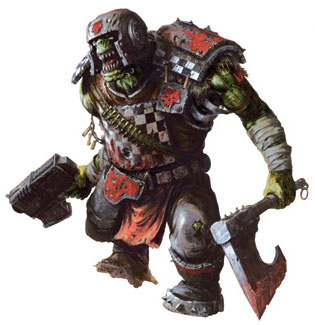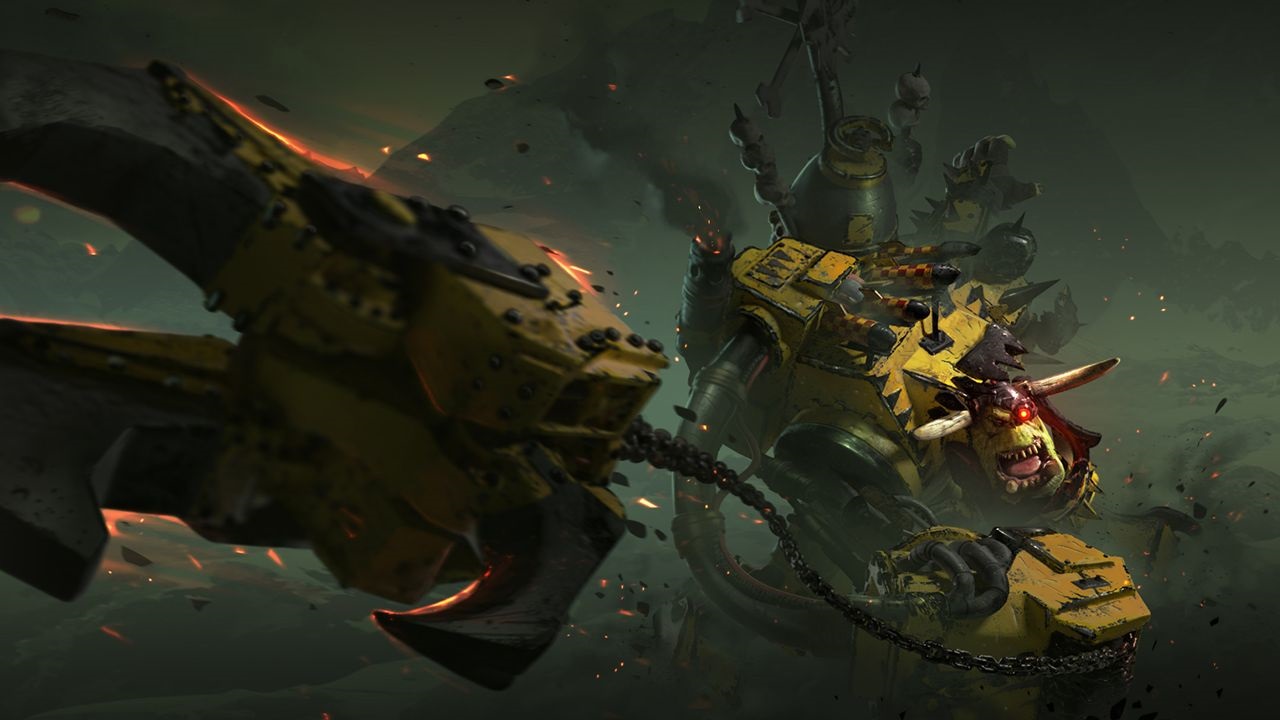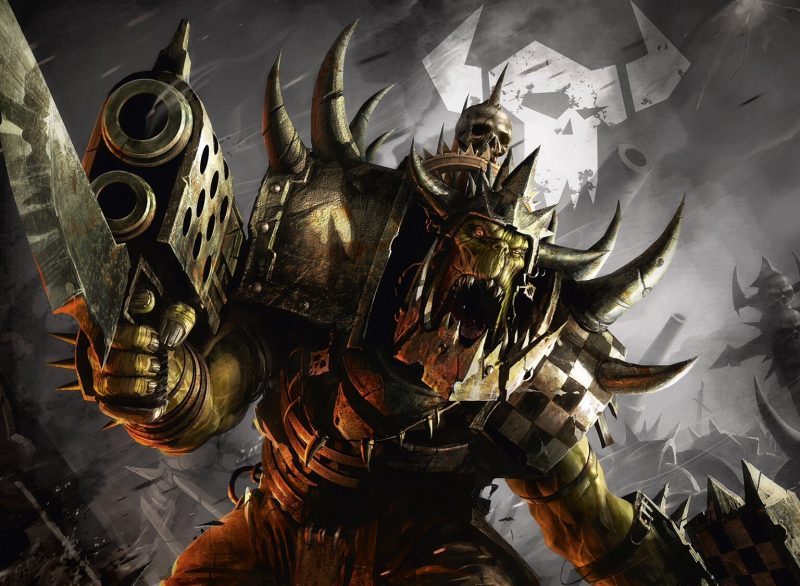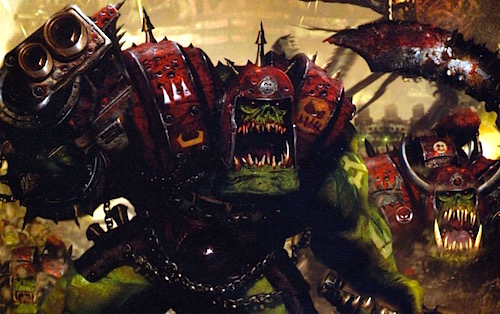40K Lore: Orkoid Physiology


Loremasters, today we take a look at what makes the Green Menace tick!
The Ork physiology is simple and robust made to allow Orks to survive the most horrendous injuries and still come back for more.
Orks are a symbiosis of both animal and fungus at the most basic level. The Orks animal side lives in complete harmony with its fungal side and each compliment the other and come together to form a tough and resilient creature. An example of this is found when comparing an Ork to a human. It appears that the fungus allows the Ork’s body to negate the use of complex internal organs, the immune system and the reproductive anatomy. The fungus therefore allows the Ork to reduce the number of potentially fatal injuries possible, further improving their survivability. The Ork’s animal side however suggests a primitive pack-based omnivorous growth pattern; the Orks relying on each other to hunt for food etc. in a pack. The most interesting feature however, is the lack of any sign for any evolution or evolutionary process. This indicates that the Orks may have been created, or grown, as a result of highly advanced biological engineering. If this is true, then it is likely that the Orks represent the ultimate fighters; strong, tough, durable and aggressive with the biology to back them up.
The most striking feature about the Orks is their green skin. Combined with their green blood, Magos Biologis have come to the conclusion that, rather than a complete reliance on the consumption of nutrients in the form of food, Orks have a primitive and basic ability to photosynthesise. This would give them a tremendous advantage over other races as they can reduce their supply lines to ammunition and fuel and all the other parts of war, but without the need to transport perishable goods. The blood of an Ork is also interesting, in that it contains countless distinct fungal organisms and has a chlorophyll high content, with trace elements of carbon and copper. This would account for the green colour of the blood and shows that photosynthesis is an important part of the Ork structure.
The Ork head is, like many xenos of the galaxy, similar in design to that of the human cranium, although it is of a different shape and colour. The teeth suggest an omnivorous or opportunistic diet, which links with their primitive pack-based organisation. The skull, like many other parts of the Ork body, is far thicker than that of a human, giving it toughness far exceeding humans’ own. The tusks on the Ork face are unlikely to be related to food consumption (even though Orks photosynthesise, they also consume food, mainly Squigs) and are more for decoration or combat, more likely the latter. They have pointed ears like the Eldar, although they have a low density of nerve clusters, indicating a stripped down to bare essentials approach to the Ork creation. All of this gives Orks a simple, effective and durable body, allowing them to fight well but passing over quality of sensation.
An Orks internal organs, noted earlier, are simple and effective, relying heavily on their fungal elements. They have a large multi-chambered stomach which feeds a crude renal system. This combined with a body-cavity filling ‘fungal soup’ (which has the effect of replacing the biochemical organs (liver, kidney, spleen, pancreas etc.) gives the Orks an intensely strong internal system, even though it is quite basic in design. The bones of an Ork are thick, hard and durable, allowing them to sustain high velocity impacts without fracture or damage. The structure is similar to that of humans but the core of the bone contains a spongy fungal matter, replacing the simple human marrow. The Ork brain is quite large, similar in structure to that of a human or Eldar. There is, unusually, a complete lack of fungus or vegetable matter. The most developed part is that of the old brain, controlling more base functions which explain their natural aggression and pack hunting strategies. Finally, much of the Ork body is filled with a spongy mass, presumably to protect what little internal organs the Ork possesses. There are also several gills located around the Ork body, presumably for oxygen absorption.
The structure and design of the Ork body provide a strong, tough and resilient system but also running at a low level of complexity. These combine to show that Orks are genetically engineered for combat. Their muscles are extremely strong and their squat bodies can stand immense punishment.
Want to learn more about Orks? Check out the Lexicanum for More!

